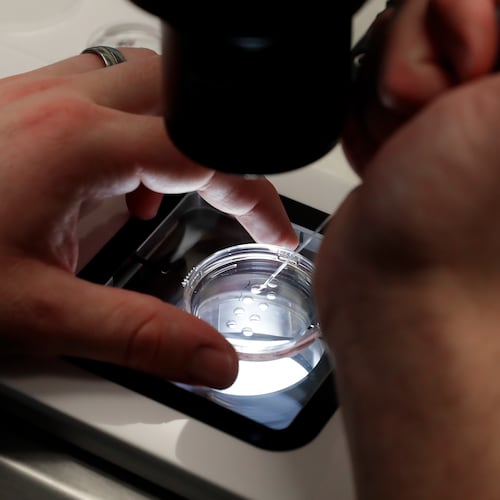The Georgia General Assembly finalized new legislative maps Monday with district boundaries drawn to ensure Republicans maintain control at the Capitol as Democrats gain ground in a changing state.
The state House voted 96-70 on maps that redistrict the state Senate, sending the bill to Gov. Brian Kemp for his signature. The Senate already signed off on maps for both chambers last week, and state lawmakers will next focus on Georgia’s 14 congressional districts.
The completion of state redistricting cements Republican majorities at the Georgia Capitol heading into next year’s elections. While the maps favor the GOP, they also enable Democrats to pick up several seats in fast-growing metro areas.
Gerrymandering
Redistricting is required every decade to ensure districts have equal populations. Georgia’s population has grown by 1 million since 2010, bringing the state to a total of 10.7 million residents.
Because Republicans hold a majority in both the state House and Senate, they have enough votes to draw maps that give them an advantage in future elections. Democrats attempted to do the same thing when they were in power 20 years ago.
The process results in gerrymandering, in which legislators choose their voters by shaping districts in a way that maximizes their chances of reelection.
“This map does not do right by the people of Georgia,” said state Rep. Bee Nguyen, a Democrat from Atlanta. “What we see instead is one party trying to install minority rule.”
House Redistricting Chairwoman Bonnie Rich, a Republican from Suwanee, said legislators drew maps after listening to the public in 11 meetings across the state last summer.
“Yes, Georgians have requested transparency, and yes, we have given them transparency,” Rich said. “Anyone who votes no is exercising a dishonest stand based on partisan politics and buzzwords.”
Georgia’s new maps give Republicans an inherent advantage, according to an evaluation by the Princeton Gerrymandering Project. The university used computers to simulate 1 million possible maps of the state’s Senate and House to find the most common outcomes.
In a politically neutral mapmaking process, Georgia’s 56-member state Senate would have 25-27 seats represented by Democrats instead of just 23 under the map approved Monday, according to Princeton’s analysis.
The new 180 House districts also benefit Republicans, who created 82 districts that lean toward Democrats, at the low end of the ideal 82-89 Democratic range under more balanced maps, according to Princeton.
Republicans currently hold a 103-77 advantage in the House and a 34-22 lead in the Senate.
The maps include opportunities for Democrats to gain seats as Georgia’s electorate has shifted toward a more even statewide split between the two political parties. Rural areas that tend to favor Republicans have lost population, while growing metro Atlanta communities will gain representation.
Under the new districts, six or seven more House districts favor Democrats and one more Senate district leans toward Democrats.
Legislators in jeopardy
The Senate map approved Monday reshapes a district held by Democratic state Sen. Michelle Au by making it lean distinctly Republican.
The district’s lines would be redrawn from a Johns Creek area that supported Democrat Joe Biden with 59% of the vote, moving north into Forsyth County, creating a district where 52% of voters backed Republican Donald Trump.
Though Democrats might lose Au’s seat, they could win in two new Senate districts — one in Gwinnett County and another near Roswell and Sandy Springs in Fulton County.
Credit: Gina.Wright
Credit: Gina.Wright
On the House side, the maps jeopardize the reelection of two Republicans.
The Coweta County district held by state Rep. Philip Singleton would become more liberal by adding parts of south Fulton County, making it an area where 67% of voters backed Biden. And state Rep. Gerald Greene’s district based in Cuthbert would become more Democratic by stretching into Albany, setting him up for a challenge against Democratic state Rep. Winfred Dukes in a district that Biden won with 54% of the vote.
Metro Atlanta areas that trend toward Democrats would gain representation, with two new districts in Cobb County, two in Gwinnett County, one in Fulton County and one in Rockdale County.
Some legislators will be forced out of office because they were drawn into districts with other representatives, where only one will be able to win reelection.
Five Republicans and three Democrats were drawn into competitive districts with fellow legislators, including Greene and Dukes.
Republican state Reps. James Burchett of Waycross and Dominic LaRiccia of Douglas were put in the same district, as were state Reps. Danny Mathis of Cochran and Robert Pruitt of Eastman. Among Democrats, Gwinnett County state Reps. Shelly Hutchinson and Rebecca Mitchell would be paired.
Georgia district sizes
14 congressional districts: 765,136 residents each
56 state Senate districts: 191,284 residents each
180 state House seats: 59,511 residents each
Georgia population: 10,711,908
Source: House Budget and Research Office
About the Author
Keep Reading
The Latest
Featured





